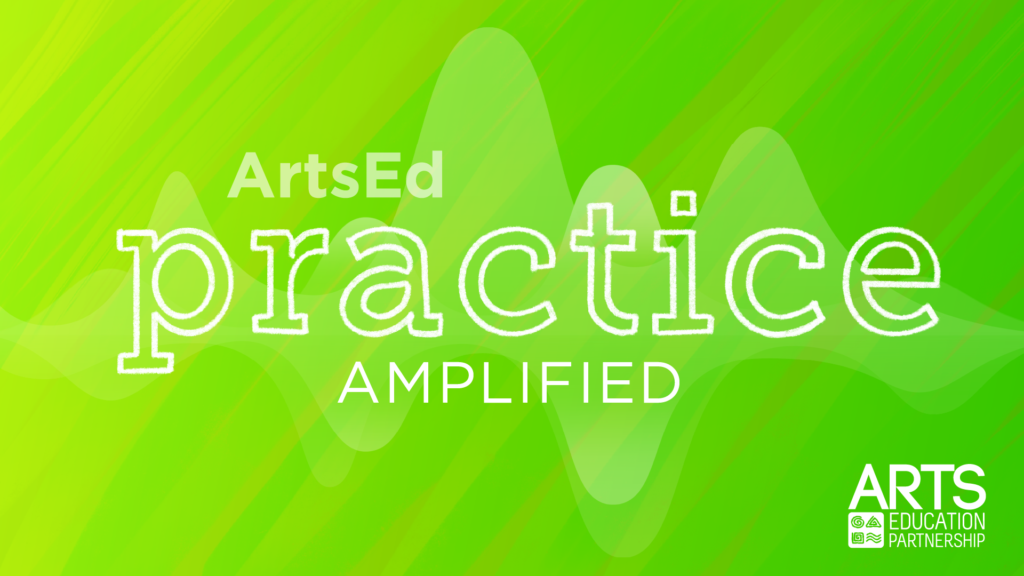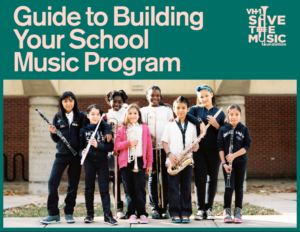Supporting Growing Music Programs in Public Schools

Starting a new music program is quite an undertaking, especially for a school principal who does not have a music or arts education background. These principals need a wealth of support and guidance to ensure they are taking the right steps. This is VH1 Save The Music’s starting point in most of our grantee schools. We work with excited, supportive principals who need structure and clarity as they establish an instrumental music program.
 We’ve just updated our Guide to Building Your School Music Program, thanks to feedback from the VH1STM Future of Music Education Council and national leaders in music and arts education. Organized into easy-to-follow sections, this guide speaks to school leaders who want guidance on how to get a new program off the ground, implement the National Core Arts Standards for Music and learn more about latest research showcasing the benefits of music education. From referencing a research study on the benefits of pull-out lessons to providing a list of basic supplies a band director needs to support their students, this is a go-to resource for principals and music teachers to help support their growing music programs.
We’ve just updated our Guide to Building Your School Music Program, thanks to feedback from the VH1STM Future of Music Education Council and national leaders in music and arts education. Organized into easy-to-follow sections, this guide speaks to school leaders who want guidance on how to get a new program off the ground, implement the National Core Arts Standards for Music and learn more about latest research showcasing the benefits of music education. From referencing a research study on the benefits of pull-out lessons to providing a list of basic supplies a band director needs to support their students, this is a go-to resource for principals and music teachers to help support their growing music programs.
This guide, while freely available to all, is part of the VH1 Save The Music Core Grant, which provides a jump-start package of musical instruments and supplies to help get a new music program off the ground.
To be eligible, each school must commit to:
- Supporting a full-time certified music teacher’s salary.
- Implementing the instrumental music program during the regular school day.
- Meeting a minimum of 45 minutes of instruction per week (general music can and should be currently be available at the school).
- Providing a designated classroom for instruction and secure locked storage for instruments.
- Maintaining the instruments and investing in the growth of the program for a 10-year period.
- Complying with our annual evaluation process (including a report and site visits).
With the above commitment, each grantee school receives:
- $40,000 worth of band, string or mariachi instruments.
- Music stands and stand racks.
- Method books.
- Professional development.
- Ongoing program support for a 10-year period.
Research shows that education in and through the arts can have dramatic effects on student success — from increased test scores to the development of critical skills, such as creativity, teamwork and perseverance. More specifically, music education prepares students to learn, facilitates academic achievement and develops the creative capacities needed for lifelong success. If you know of any school leaders who are growing school music programs and interested in grant opportunities, please contact us at: stmschool@vh1savethemusic.com.
This guest post comes from Jaclyn Rudderow, program director at the VH1 Save The Music Foundation, a partner organization of the Arts Education Partnership.
VH1 Save The Music Foundation is a nonprofit that helps kids, schools and communities realize their full potential through the power of making music. Since 1997, in partnership with school districts, VH1 Save the Music Foundation has restored music education programs in more than 2,000 public schools across the nation, improving the lives of more than a million children. Connect with VH1STMF and join the conversation on Facebook, Twitter, Instagram and Snapchat @vh1savethemusic.



